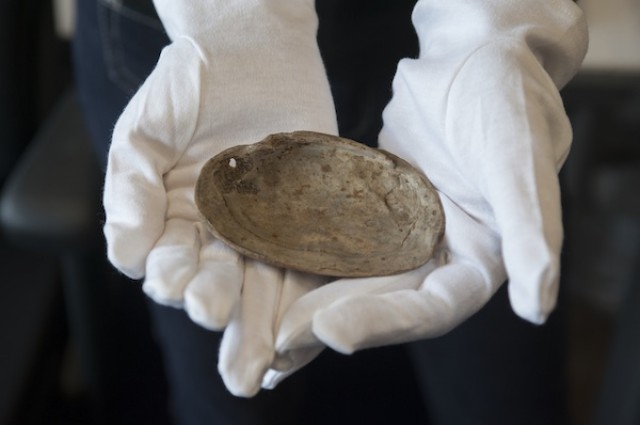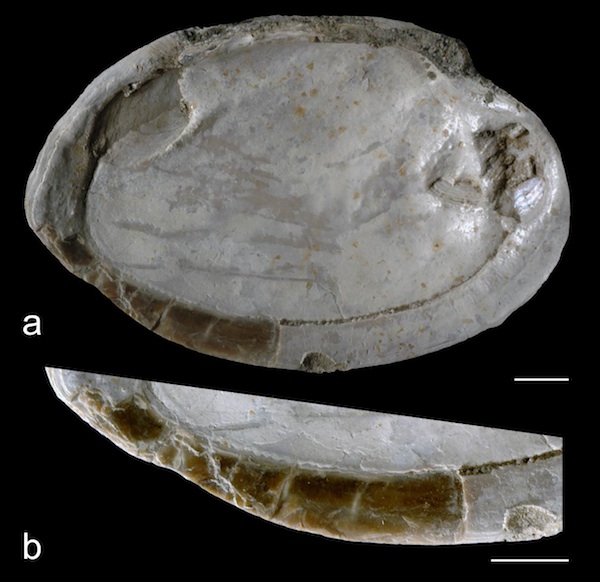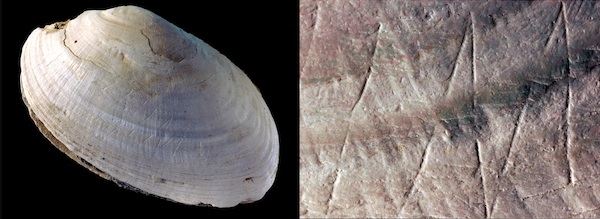
Analyzing hundreds of samples collected in the 1890s from the main bone layer (called Hauptknochenschicht) of the Trinil site in Java, Joordens, a large international team found evidence for the modification of the shells of a mollusk called Pseudodon. Homo erectus had a clever trick for opening these large freshwater mussels: They drilled a hole through the shell using a hard, pointed object (possibly a shark's tooth) at exactly the spot where the muscle that keeps the shell closed is attached. These are called adductor muscles, and once damaged, the bivalves open right up. After eating the mussels, they used the empty shells to manufacture tools or as a canvas for some prehistoric doodling. The sediment in the shells date to between 430,000 and 540,000 years ago.
One of the shells has a smooth and polished edge, which indicates that it was used as a tool for cutting or scraping. Homo erectus made this shell tool by modifying the ventral margin (or underside) of a Pseudodon shell (DUB5234-DL) pictured below (a). Below that is a detailed look at the sharp edge (b). Another shell has a zigzag pattern of grooves on it that's only visible now using light from an angle. The lack of gaps between the turns of the grooves suggests that the maker paid meticulous attention to detail - not to mention, it was very difficult to replicate the pattern on both fresh and fossilized shells (the researchers tried). "We are really certain that this must have been made by an agent who did a very deliberate action with a very sharp implement," Joordens tells Nature. Possibly with something like the shark tooth used to open the mussel. Here's the fossilized Pseudodon shell (DUB1006-fL) with the engraving. A detailed close-up is on the right. So, it was purposeful, but can we actually call it art? "If you don't know the intention of the person who made it, it's impossible to call it art," she adds. "But on the other hand, it is an ancient drawing. It is a way of expressing yourself. What was meant by the person who did this, we simply don't know... It could have been to impress his girlfriend, or to doodle a bit, or to mark the shell as his own property."





You couldn't possibly be thinking that the bastions of higher learning are in league with government and religion to support our current, fabricated reality? Oh, the horror, the horror!